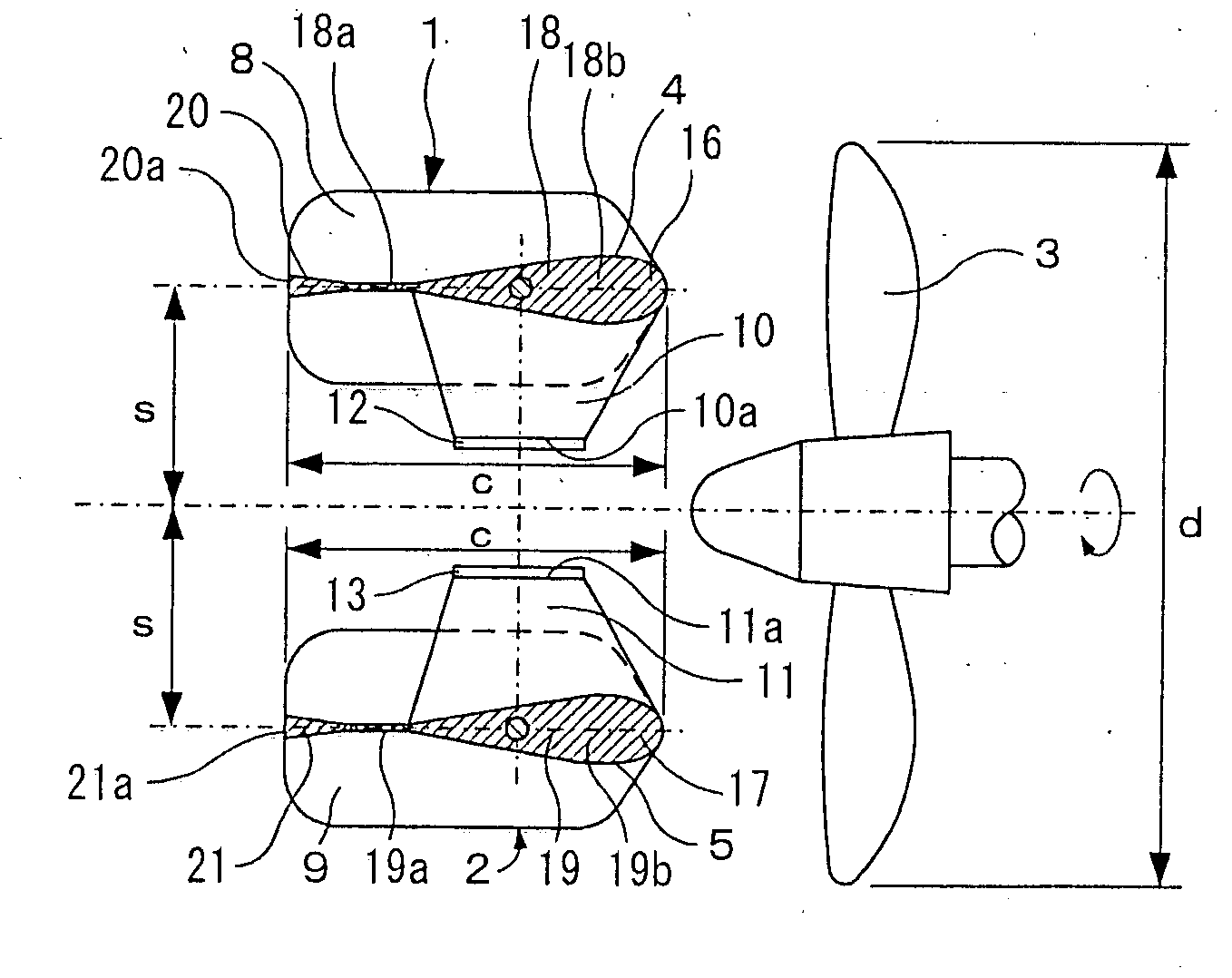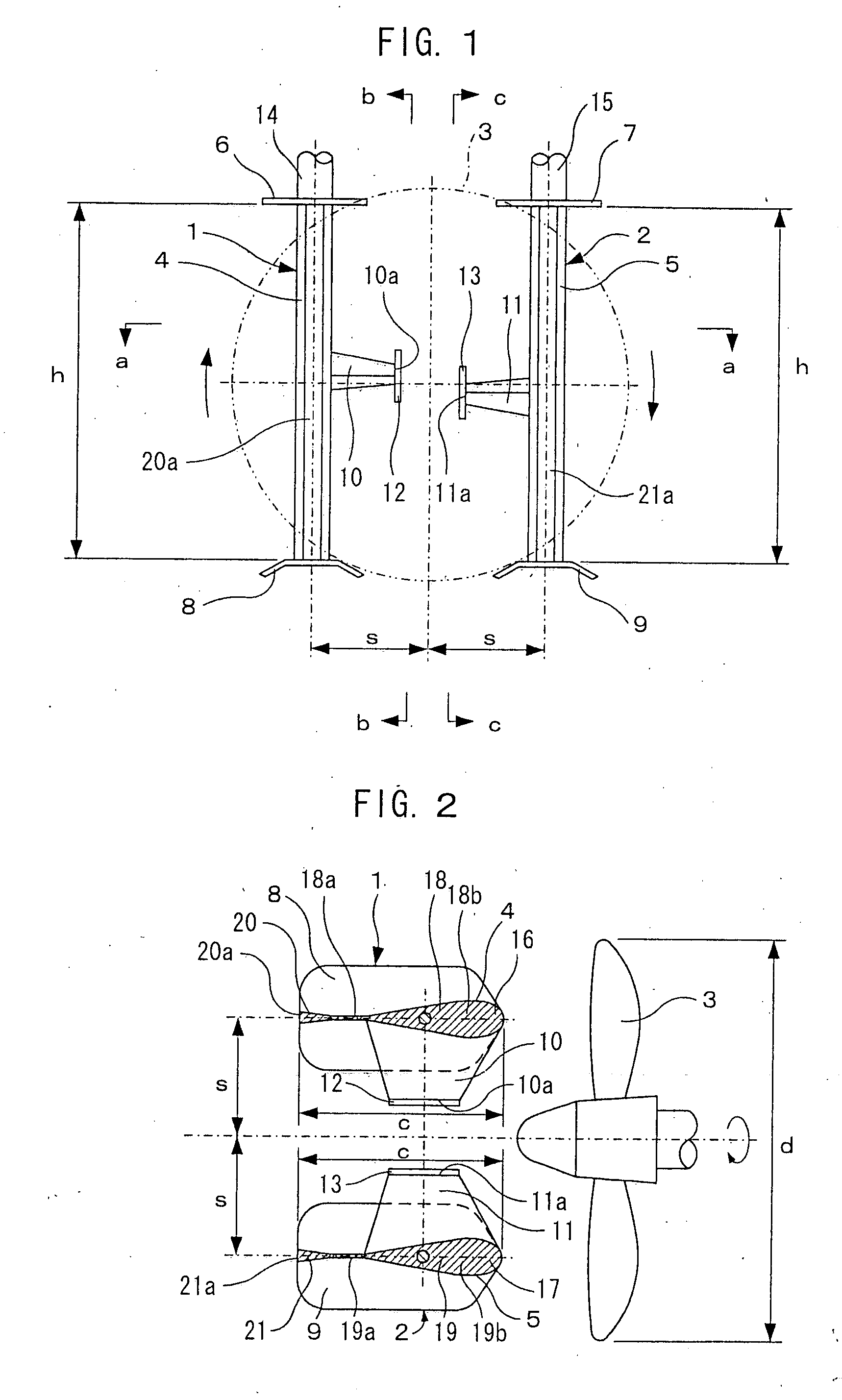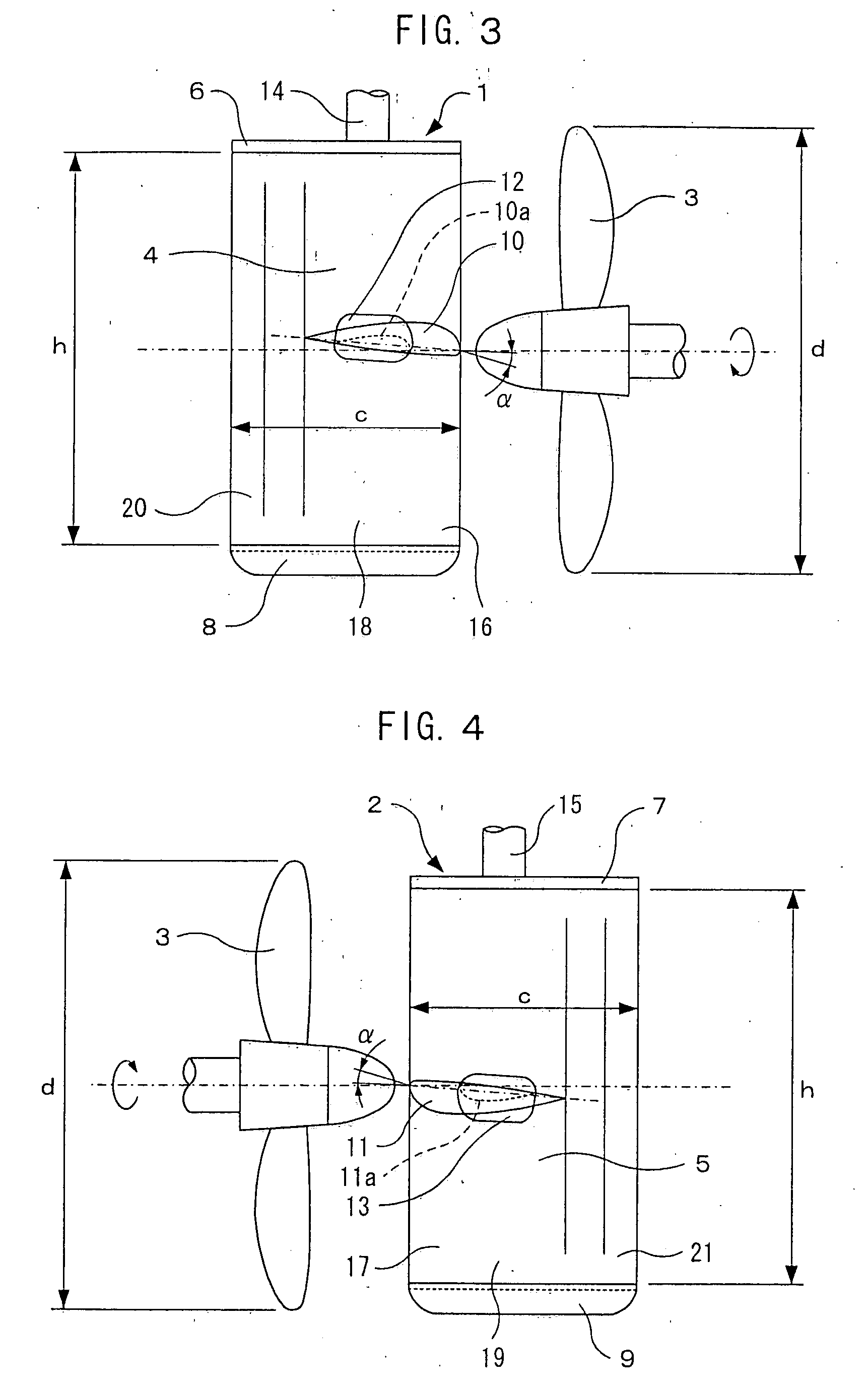Twin-rudder system for large ship
a twin-rudder system and large-sized technology, applied in the direction of special-purpose vessels, rotary propellers, vessel construction, etc., can solve the problems of low rudder force, low propulsive performance, economic loss, etc., and achieve the effect of shortening the stopping distance of the ship and quickly reducing the speed of the ship
- Summary
- Abstract
- Description
- Claims
- Application Information
AI Technical Summary
Benefits of technology
Problems solved by technology
Method used
Image
Examples
operation example 1
[0140] When putting the helm to port, for instance, such a rudder angle order signal .delta..sub.i is issued by the automatic steering apparatus 31a or the steering wheel 31b of the auto-pilot 31.
[0141] On this occasion, with respect to operation of the port rudder 33p, such a port control signal .delta..sub.p as equal to a rudder angle order signal .delta..sub.i is given to the port control amplifier 35p from the port rudder angle control operation 32p. The port control amplifier 35p operates the port rudder 33p in the port direction by controlling the port hydraulic pump unit 36p so as to operate the port steering gear 34p. An actual moving amount of the port rudder 33p is detected by the port rudder angle feedback controller 37p and fed back to the port control amplifier 35p. When the amount fed back comes to equal to the port control signal .delta..sub.p, the port control amplifier 35p makes operation of the port hydraulic pump unit 36p stop. By this operation the port rudder 33...
operation example 2
[0145] In view that, within the range of comparatively small rudder angle, influence of mutual interfering action of a deflected propeller slip stream that streams between two rudders is small, functional operation of control signals .delta..sub.p, .delta..sub.s in the rudder angle control operations 32p, 32s can be simplified.
[0146] For instance, when putting the helm to port, the port rudder 33p is so controlled that such a port control signals .delta..sub.p as equal to a rudder angle order signal .delta..sub.i is given within the range up to the maximum outboard operable angle .delta..sub.M, and the starboard rudder 33s is so controlled that such a starboard control signal .delta..sub.s as .delta..sub.s=.delta..sub.i is given within the range that a rudder angle order signal .delta..sub.i is smaller than the maximum inboard operable angle .delta..sub.T, and such a starboard control signal .delta..sub.s as .delta..sub.s=.delta..sub.T(constant) is given within the range that a rudd...
operation example 3
[0150] In case of making a ship crash stop, the crash astern maneuvering mode is activated. In the crash astern maneuver, the crash stopping push button P.sub.B of the rudder angle control operation for crash astern 31c of the auto-pilot 31 is pushed at the time when fuel supply to a main engine running ahead has been shut down, and hereby input signals to the port control amplifier 35p and the starboard control amplifier 35s issued from the automatic steering apparatus 31a or the steering wheel 31b are automatically shut off, and the port and starboard control amplifiers 35p, 35s are placed under control of the rudder angle control operation for crash astern 31c by action of the relay R.sub.Y.
[0151] The rudder angle control operation for crash astern 31c issues a control signal to the port control amplifier 35p so as to make the port rudder 33p turn hard port, and issues a control signal to the starboard control amplifier 35s so as to make the starboard rudder 33s turn hard starboa...
PUM
 Login to View More
Login to View More Abstract
Description
Claims
Application Information
 Login to View More
Login to View More - R&D
- Intellectual Property
- Life Sciences
- Materials
- Tech Scout
- Unparalleled Data Quality
- Higher Quality Content
- 60% Fewer Hallucinations
Browse by: Latest US Patents, China's latest patents, Technical Efficacy Thesaurus, Application Domain, Technology Topic, Popular Technical Reports.
© 2025 PatSnap. All rights reserved.Legal|Privacy policy|Modern Slavery Act Transparency Statement|Sitemap|About US| Contact US: help@patsnap.com



